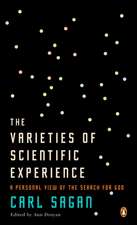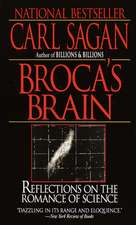The Nature of Life: International Library of Philosophy
Autor R. Rignanoen Limba Engleză Hardback – sep 2000
| Toate formatele și edițiile | Preț | Express |
|---|---|---|
| Paperback (1) | 127.80 lei 6-8 săpt. | |
| Taylor & Francis – 18 noi 2010 | 127.80 lei 6-8 săpt. | |
| Hardback (1) | 408.44 lei 6-8 săpt. | |
| Taylor & Francis – sep 2000 | 408.44 lei 6-8 săpt. |
Din seria International Library of Philosophy
-
 Preț: 306.06 lei
Preț: 306.06 lei -
 Preț: 304.87 lei
Preț: 304.87 lei -
 Preț: 381.64 lei
Preț: 381.64 lei - 8%
 Preț: 384.71 lei
Preț: 384.71 lei - 28%
 Preț: 244.18 lei
Preț: 244.18 lei - 36%
 Preț: 1041.33 lei
Preț: 1041.33 lei - 34%
 Preț: 1043.78 lei
Preț: 1043.78 lei - 36%
 Preț: 1573.08 lei
Preț: 1573.08 lei - 36%
 Preț: 1044.19 lei
Preț: 1044.19 lei -
 Preț: 392.87 lei
Preț: 392.87 lei - 37%
 Preț: 1348.74 lei
Preț: 1348.74 lei - 37%
 Preț: 1181.73 lei
Preț: 1181.73 lei - 25%
 Preț: 260.93 lei
Preț: 260.93 lei - 31%
 Preț: 459.60 lei
Preț: 459.60 lei - 39%
 Preț: 1700.69 lei
Preț: 1700.69 lei - 37%
 Preț: 1348.33 lei
Preț: 1348.33 lei - 18%
 Preț: 1005.67 lei
Preț: 1005.67 lei - 34%
 Preț: 1042.15 lei
Preț: 1042.15 lei - 37%
 Preț: 1019.72 lei
Preț: 1019.72 lei - 36%
 Preț: 1042.15 lei
Preț: 1042.15 lei - 39%
 Preț: 1690.08 lei
Preț: 1690.08 lei - 34%
 Preț: 1466.20 lei
Preț: 1466.20 lei - 37%
 Preț: 1181.31 lei
Preț: 1181.31 lei - 36%
 Preț: 1040.93 lei
Preț: 1040.93 lei -
 Preț: 384.16 lei
Preț: 384.16 lei - 34%
 Preț: 1044.19 lei
Preț: 1044.19 lei - 31%
 Preț: 326.11 lei
Preț: 326.11 lei - 18%
 Preț: 1001.24 lei
Preț: 1001.24 lei - 37%
 Preț: 1349.55 lei
Preț: 1349.55 lei -
 Preț: 489.26 lei
Preț: 489.26 lei - 34%
 Preț: 1349.17 lei
Preț: 1349.17 lei - 37%
 Preț: 1403.63 lei
Preț: 1403.63 lei - 34%
 Preț: 1351.60 lei
Preț: 1351.60 lei - 34%
 Preț: 1043.37 lei
Preț: 1043.37 lei -
 Preț: 429.41 lei
Preț: 429.41 lei - 36%
 Preț: 1043.78 lei
Preț: 1043.78 lei - 36%
 Preț: 1040.93 lei
Preț: 1040.93 lei - 37%
 Preț: 1237.79 lei
Preț: 1237.79 lei - 30%
 Preț: 768.30 lei
Preț: 768.30 lei - 36%
 Preț: 1044.60 lei
Preț: 1044.60 lei - 18%
 Preț: 998.88 lei
Preț: 998.88 lei - 34%
 Preț: 1041.33 lei
Preț: 1041.33 lei - 54%
 Preț: 709.78 lei
Preț: 709.78 lei - 54%
 Preț: 1133.42 lei
Preț: 1133.42 lei - 36%
 Preț: 1461.32 lei
Preț: 1461.32 lei - 34%
 Preț: 1347.51 lei
Preț: 1347.51 lei -
 Preț: 494.80 lei
Preț: 494.80 lei
Preț: 408.44 lei
Preț vechi: 593.78 lei
-31% Nou
Puncte Express: 613
Preț estimativ în valută:
78.16€ • 82.19$ • 64.58£
78.16€ • 82.19$ • 64.58£
Carte tipărită la comandă
Livrare economică 17 aprilie-01 mai
Preluare comenzi: 021 569.72.76
Specificații
ISBN-13: 9780415225687
ISBN-10: 041522568X
Pagini: 180
Dimensiuni: 138 x 216 mm
Greutate: 0.34 kg
Ediția:1
Editura: Taylor & Francis
Colecția Routledge
Seria International Library of Philosophy
Locul publicării:Oxford, United Kingdom
ISBN-10: 041522568X
Pagini: 180
Dimensiuni: 138 x 216 mm
Greutate: 0.34 kg
Ediția:1
Editura: Taylor & Francis
Colecția Routledge
Seria International Library of Philosophy
Locul publicării:Oxford, United Kingdom
Cuprins
Part 1 Purposiveness of Vital Phenomena; Chapter 1 Purposiveness of the Most Elementary Physiological Phenomena; Chapter 2 Purposiveness of Generative and Regenerative Phenomena; Chapter 3 Purposiveness of the Phenomena of Pre-Established Adaptation; Chapter 4 Purposiveness of the Phenomena of new Adaptation; Chapter 5 Purposiveness of the Behaviour of the Lower Organisms; Chapter 6 Purposiveness of the Reflexes and Instincts; Chapter 7 Purposiveness of the Affective Tendencies; Chapter 8 Purposiveness of Mental Activity; Chapter 9 Purposiveness of Social Manifestations; Part 2 An Intermediate Solution between Vitalism and Mechanism; Chapter 10 Vitalism and Mechanism; Chapter 11 The Vitalistico-Energetic Solution; Chapter 12 Conclusion;




















